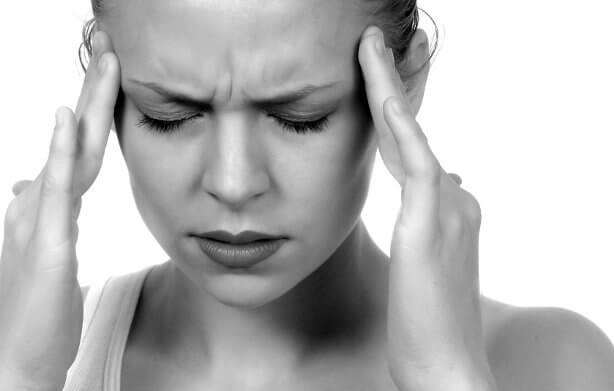Meningitis is a medical term for a serious infectious disease in which the lining of the brain or spinal cord, located between the bones and the brain, becomes inflamed. This pathology occurs due to many reasons and can develop as an independent disease or as a complication of infections. Meningitis is recognized by a number of characteristic symptoms.
Such a disease is considered very dangerous, as it can lead to disability, falling into a coma and death. That is why when signs of illness appear, it is important to call emergency help. Timely and proper treatment can prevent serious consequences.
The disease is caused by various pathogenic microorganisms - bacteria, fungus, as well as viruses. Depending on this, two forms of meningitis are distinguished: purulent and serous.
The causative agents of purulent meningitis are such pathogenic bacteria:
- meningococci
- Klebsiella
- pneumococci
- tuberculosis bacillus
- coli
- Haemophilus influenzae
Most often, bacterial meningitis occurs in adults.The serous form of the disease (without the development of a purulent process) is provoked by the ECHO virus, enterovirus, Coxsackie virus, mumps or poliomyelitis viruses, and herpes infection. Viral meningitis usually occurs in childhood.
In addition, meningitis can develop due to a fungus, for example, in the presence of candida or cryptococci in the body. In some cases, the causative agents of the disease are considered to be the simplest microorganisms - toxoplasma and amoeba.
There is also a mixed form, when the disease develops as a result of several pathogens.
Meningitis is primary, when it passes as an independent disease, and secondary - its development is characterized as a complication of some kind of infection, for example, measles, syphilis, tuberculosis, mumps. The disease can occur against the background of untreated, osteomyelitis, facial boils.Pathology can develop as a result of head injury.
More information about meningitis can be found in the video:
Factors that influence the development of a pathological condition include:
- Weakened immune system.
- Bad nutrition.
- Chronic forms of diseases.
- HIV.
- Diabetes.
- stressful situations.
- Hypovitaminosis.
- Alcohol abuse.
- Drug use.
- Frequent hypothermia.
- Temperature fluctuation.
Children are at risk for contracting meningitis. This is due to the fact that in childhood the blood-brain barrier has a greater permeability, as a result of which substances enter the brain that do not penetrate in adults.
The disease can be contracted by airborne droplets, through contaminated water, food. Insect and rodent bites are also modes of transmission. In addition, meningitis can be transmitted during childbirth from mother to child. Sexual intercourse, kissing, and contact with infected blood or lymph are also considered routes of infection.
Signs of the disease

Meningitis is characterized primarily by headaches, which are of a different nature and intensity. Most often, the head hurts constantly, in addition, it worsens when the head is tilted forward, with loud sounds and bright lighting.Also an important sign of the development of meningitis is the rigidity of the muscles of the neck. With this phenomenon, it is difficult for patients to bend their heads forward, the condition is facilitated by tilting the head back.
With meningitis, Kernig's symptom is characteristic - the hip joints and knees in a bent position cannot straighten. Also, the difference in the disease is the sign of Brudzinsky, in which the legs involuntarily bend when the patient is in a supine position and tilts his head to his chest.
In infants, a characteristic meningeal symptom is bulging, pulsing and tension of the large fontanel. If the child is held by the armpits, his head involuntarily throws back, and his legs are pulled up to his stomach. Such a phenomenon in medicine is called the symptoms of Le Sage.
Also, signs of meningitis are pain that occurs when pressure is applied to the area of the auricle and when the skull is tapped.
The disease is also accompanied by other symptoms. These include:
- Dizziness
- Frequent vomiting, nausea
- hyperthermia
- General weakness
- Fear of bright light
- Sound phobia
- neck numbness
- Increased sweating
- Strabismus
- Pale skin
- neck numbness
- Double vision
- muscle pain
- Dyspnea
- Tachycardia
- Sleep disturbance (increased drowsiness)
- Decreased appetite
- Feeling thirsty
- convulsions
- pressure drop
- Loss of consciousness
- Diarrhea (most common in children)
- Feeling of pressure in the eye area
- Enlarged lymph nodes
- Paresis of mimic muscles
In addition to the physical signs of meningitis, there are also mental symptoms, namely hallucinations, aggressiveness, irritability, apathy. The patient has a markedly reduced level of consciousness with meningitis.
A dangerous sign of the disease is the occurrence of rashes of red or pink color. This phenomenon indicates sepsis in meningitis.If such symptoms occur, it is important to seek medical help in time, since the consequences of delayed treatment can be deplorable.
Disease danger

With meningitis, mandatory and urgent hospitalization of the patient is required. This is due to the fact that the disease is dangerous with such severe complications:
- Asthenic syndrome.
- Sepsis.
- Hydrocephalus.
- Increased cerebrospinal fluid pressure in the brain.
- Epilepsy.
- Impaired mental development in sick children.
- Purulent arthritis.
- Endocarditis.
- Diseases associated with blood clotting.
Often, the disease develops an infectious-toxic shock, which is characterized by a sharp decrease in pressure, tachycardia, impaired functioning of organs and their systems. This condition occurs due to the fact that pathogens release toxins that have a negative effect on the human body.
In this situation, resuscitation is necessary, since coma or death is possible with infectious-toxic shock.A dangerous disease is also considered due to a decrease or loss of vision and hearing, which leads to disability.
Treatment Method

The disease is necessarily treated only in a hospital setting. It is important that the patient stay in bed.
Treatment is carried out with an integrated approach and includes the use of the following groups of medications:
- Antivirals or antibiotics (depending on the causative agent of meningitis).
- Hormonal preparations.
- Diuretic drugs (to reduce swelling of the brain) - Diakarb, Lasix.
- Means to reduce the process of intoxication (they are administered intravenously), for example, glucose solution or saline.
- Antipyretics: Nurofen, Diclofenac, Paracetamol.
- Vitamin complexes, including vitamins of groups B and C.
Antibacterial drugs can be used penicillin, macrolide and cephalosporin groups. They are administered intravenously or endolumbally (introduction into the canal of the spinal cord).
If the causative agent is viruses, then Interferon is most often prescribed. For fungal infections, Flucytosine or Amphotericin B is used.
In severe cases of the disease, resuscitation procedures are necessary.
In addition, spinal puncture is also prescribed. This procedure consists in the collection of CSF (cerebrospinal fluid). With this method, the pressure of the cerebrospinal fluid is noticeably reduced, as a result of which the patient's condition improves.Symptomatic treatment is used to eliminate allergic reactions, vomiting, irritability.
Forecast and prevention

With timely admission to the hospital and timely treatment, the disease can be cured, but this process is lengthy.
If measures are taken late, then disability or death may be a possible prognosis.
Prevention measures for the disease are as follows:
- Avoidance of crowded places in case of an increased epidemiological situation.
- The use of multivitamins in autumn and winter.
- Use of the meningococcal vaccine.
- The use of other vaccinations against various infections.
- hardening.
- Rational and balanced nutrition.
- Compliance with hygiene rules.
- Wearing protective masks during epidemics.
- Healthy lifestyle.
If a person has had contact with infected meningitis, then it is necessary to use anti-meningococcal immunoglobulins and antibacterial drugs for the purpose of prevention.

